5 stars vs. thumbs up/down—which rating system is right for your app?

.png)

.png)
Personalized UX is better UX. There’s something delightful about a user experience that feels like it was made just for you. That’s true during onboarding, and it’s even more true as users invest time and data in your product.
During onboarding, you can ask your users to select categories that apply to them or content they’re interested in to create a personalized early user experience. But what about long-term users? How do you replicate the delight of logging into a personalized dashboard for the first time?
One of the simplest (on its face, at least) and most common ways to accomplish ongoing personalization is to let users rate app content—whether that's with a star rating, thumbs up or down, hearts, or other form of evaluation.
In fact, once you start looking, you’ll see this tactic everywhere. Netflix, Amazon, Yelp, Google, Youtube, Pandora—all use ratings to personalize the individual user experience.
In this article, we’ll take a closer look at how, exactly, rating systems drive user engagement and retention. We’ll also explore the different kinds of rating systems, and which option (if any) is best for your use case.
Ratings serve different purposes for different products and different users. Before you choose which rating system to use in your product, it’s important to think about what user ratings can (and can’t) accomplish. For instance:
Which rating system you choose will depend on which one of these factors is most important to your product. A 5-star rating system may be perfect for influencing complicated buying decisions, while a simple thumbs up/down may be better for your algorithm.
To cite a well-known example:
Netflix (in)famously ditched its classic 1-to-5-star rating system for a binary thumbs up/thumbs down rating system in 2017.
In addition to the new rating system, Netflix now displays match percentages (up to 100%) that predict how much a user will like a show or movie.

According to Cameron Johnson, Netflix’s Director of Product Innovation, the new rating system received 200% more ratings in A/B tests.
That’s partly because of the way Netflix’s old star rating system functioned: The stars that each user saw next to a program reflected Netflix’s predictions about how much the user would enjoy watching it. The more users rated the things they watched, the more accurate those predictions became.
But most users didn’t get that. People were accustomed to seeing star ratings on Amazon or Yelp, where the number of stars reflected the average of everyone else’s reviews. Many Netflix users just didn’t feel compelled to rate things when they thought their opinion was just “a drop in the bucket of all Netflix reviews.”
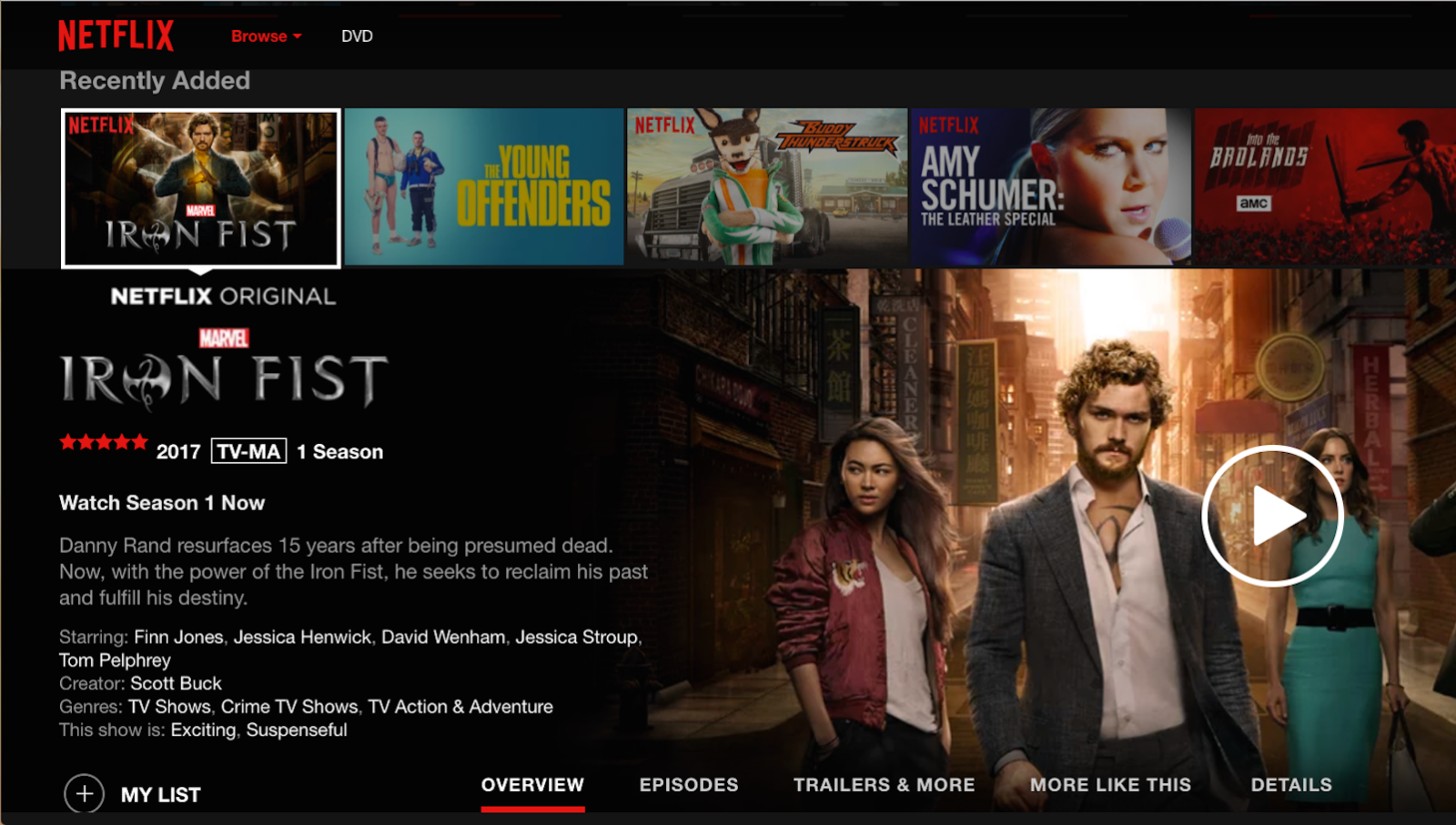
A thumbs up/thumbs down system, on the other hand, is “widely understood to imply that you are training an algorithm to know what you like.”
And a binary rating system didn’t just result in more user ratings. It also resulted in more honest evaluations of users’ own viewing preferences. That’s because when it comes to rating movies and shows, stars reflect the preferences that people want to have, rather than how people actually behave.
Netflix’s VP of Product Todd Yellin explained that the company gradually realized that behavioral data was a more valuable predictor of the content users actually wanted to consume. “Users would rate documentaries with 5 stars, and silly movies with just 3 stars, but still watch silly movies more often than those high-rated documentaries.”
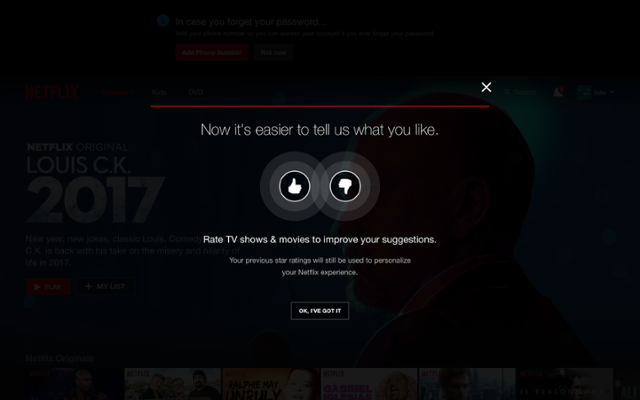
The change annoyed some of Netflix's 100 million subscribers who missed the nuance of a non-binary system. One user on Reddit summed up the complaints nicely when they wrote: “The problem with the thumbs up / thumbs down is that there is now absolutely no difference between "I guess I didn't hate this movie" and "This is the greatest movie I've ever seen in my life, and I want to see more like it."”
But this wasn’t the first time a major content provider favored thumbs over stars.
YouTube made the same shift in 2009.
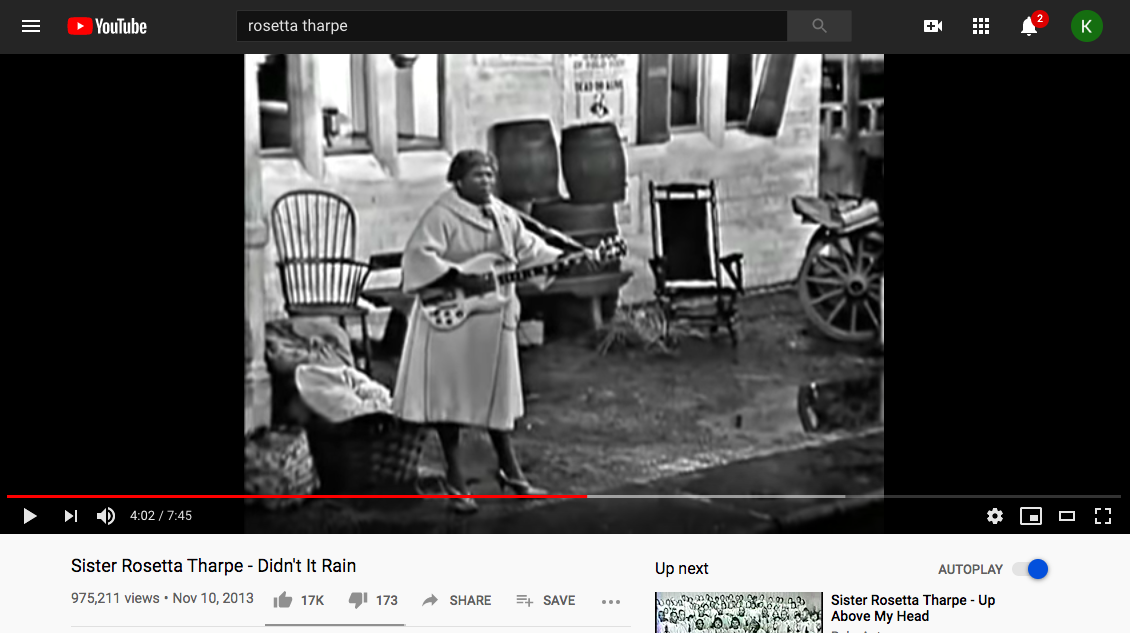
They made the switch after realizing that most users only rated videos they loved, with a smaller portion rating videos that they absolutely hated.
Users rarely gave videos 2-, 3-, or 4-stars, which resulted in a J-shaped curve—a fairly common side effect of using a 5-star rating system in the wrong context.
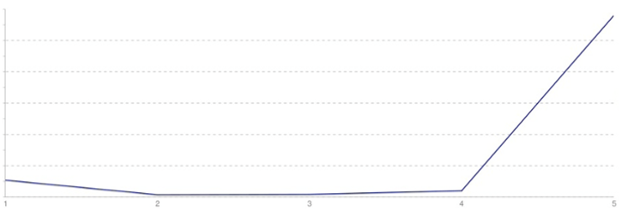
But while a simpler rating system might have improved user engagement for Netflix and YouTube, making the switch to a binary system might not be the right decision for your product.
Remember, the right choice for your product depends on your unique goals. Let’s take a closer look at each of the different rating systems
A star rating system can help people feel more confident about their decisions. This kind of rating system is commonly used by ecommerce platforms because it helps guide buying decisions—especially on large platforms where the selection of items for sale could be otherwise overwhelming.
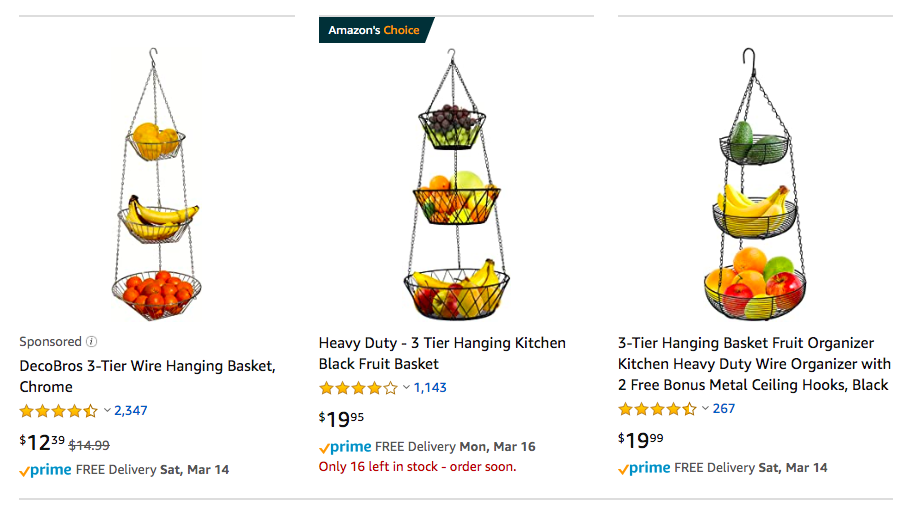
And stars ratings are often accompanied by qualitative reviews, which further aid deeper considerations. This is not only important for retail purchasing decisions, like on Amazon, but also for complex decisions with real-world consequences. Think: Booking.com (choosing a hotel room), Rover (finding a petsitter), Zocdoc (choosing a doctor), etc.
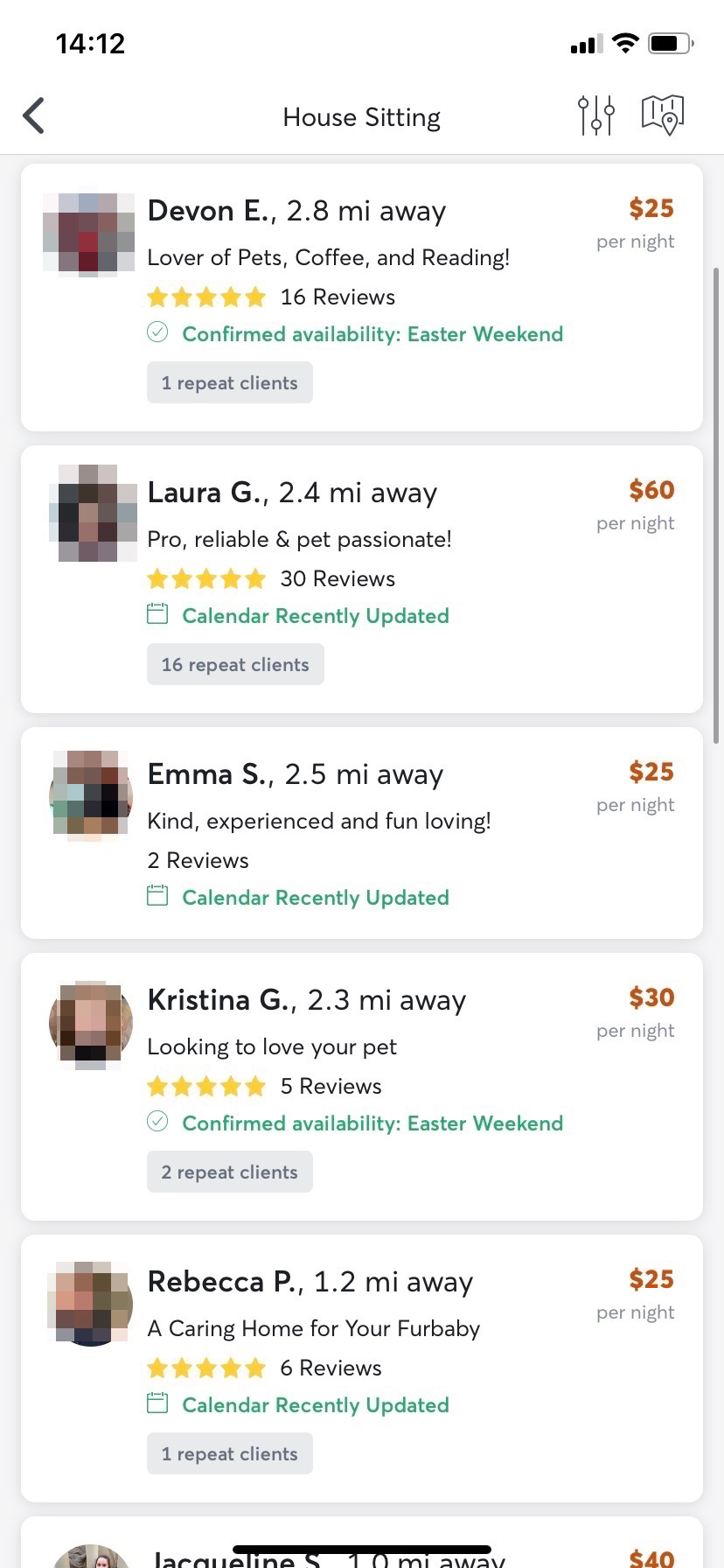
Increasing complexity with stars and qualitative reviews is a good combination if time per session is an important engagement metric for your product.
For instance, qualitative reviews—used alongside a star rating system—are part of what make TripAdvisor so browseable.
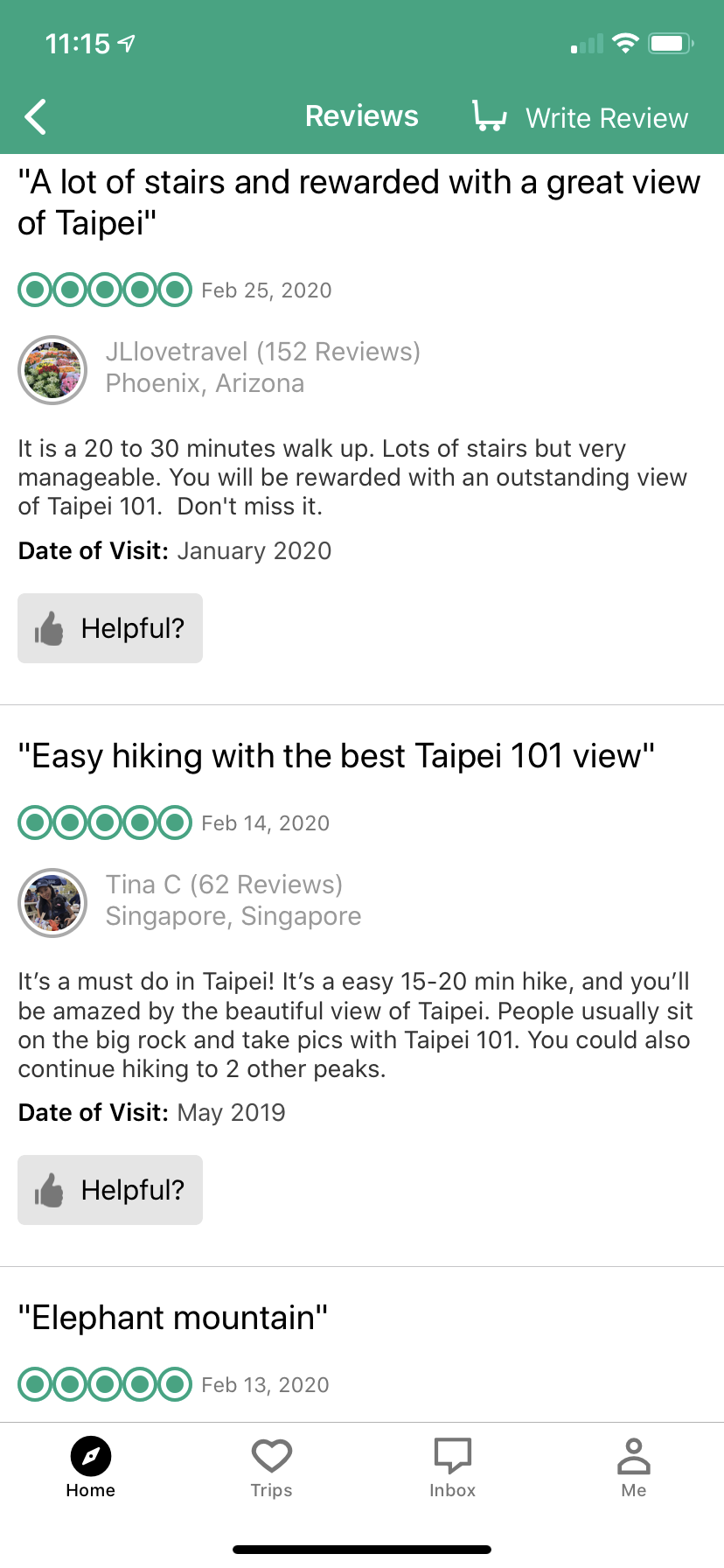
What’s more, when users have more creativity with their reviews, the reviews can become a point of pride and meaning. Yelp has done an excellent job gamifying their reviews to massively grow their user base.
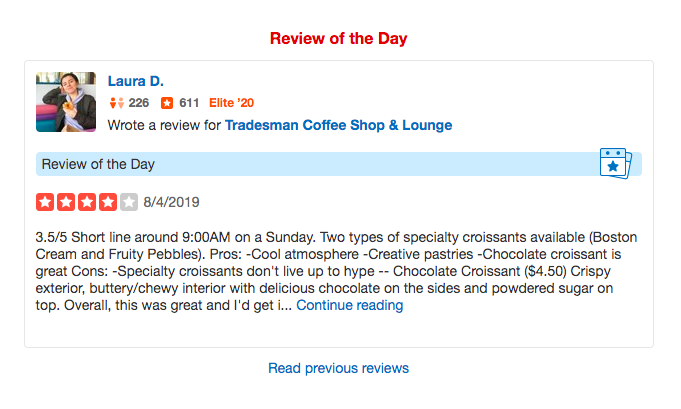
In contrast, OpenTable has a shorter path to activation. They are in the business of helping people make reservations and may not want to encourage aimless browsing that does not lead to a conversion. They ask reviewers to rate their dining experience based on multiple factors—from service quality to noise level.
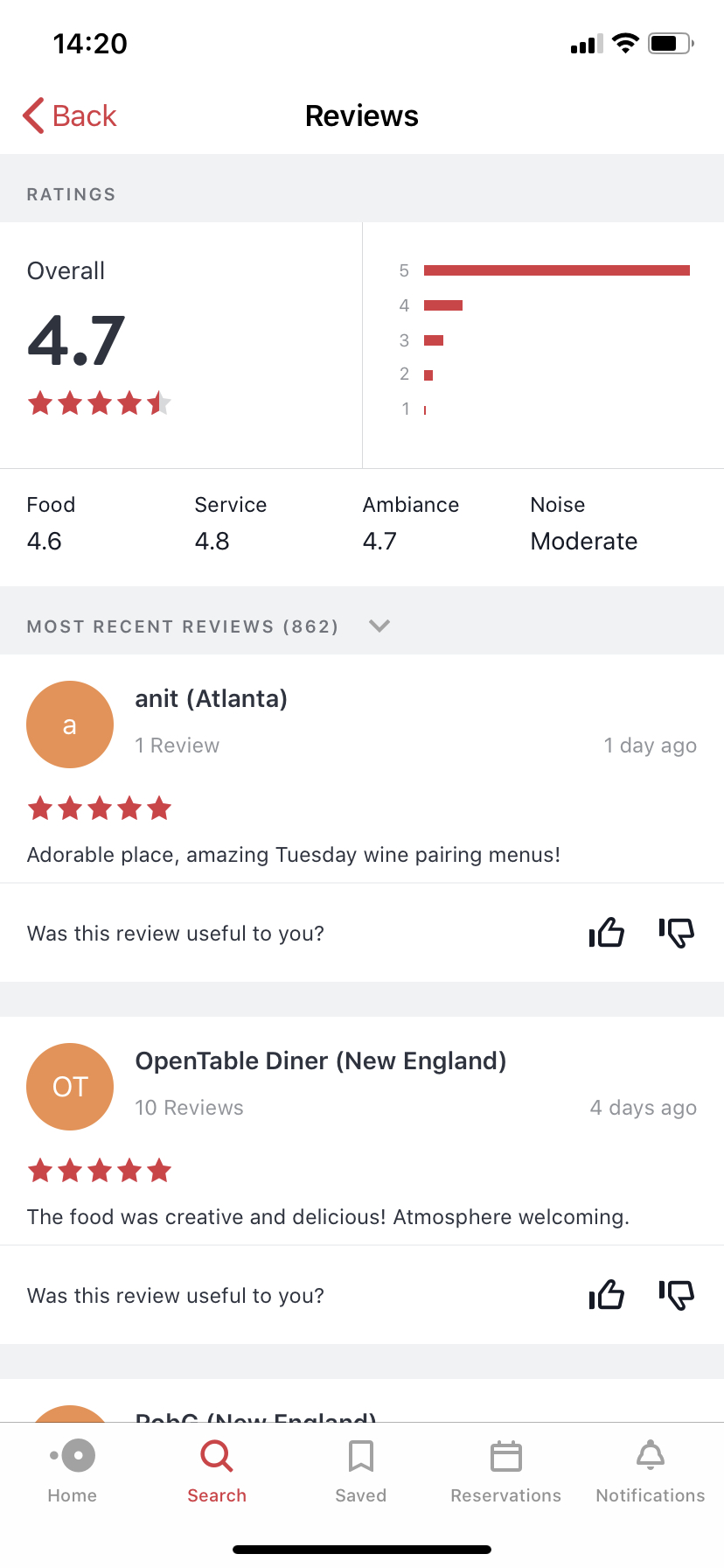
While OpenTable reviews include qualitative feedback, their UI places visual emphasis on the quantitative rating—making it easy for users to scan through the information and make a timely decision.
We’ve already learned about Netflix made the switch from a 5-star system to a binary one. And while Netflix may be one of the first companies that comes to mind when you think “algorithmic personalization,” they’re hardly alone.
Other products that are dependent on personalization have long used binary ratings. That’s because binary rating systems are better for predictive content personalization.
For instance, Pandora curates radio stations based on your listening preferences. To get feedback, they use a simple thumbs up or thumbs down option Choosing thumbs down also skips the song—an effective way to encourage positive engagement from users who hate the song they’re hearing!
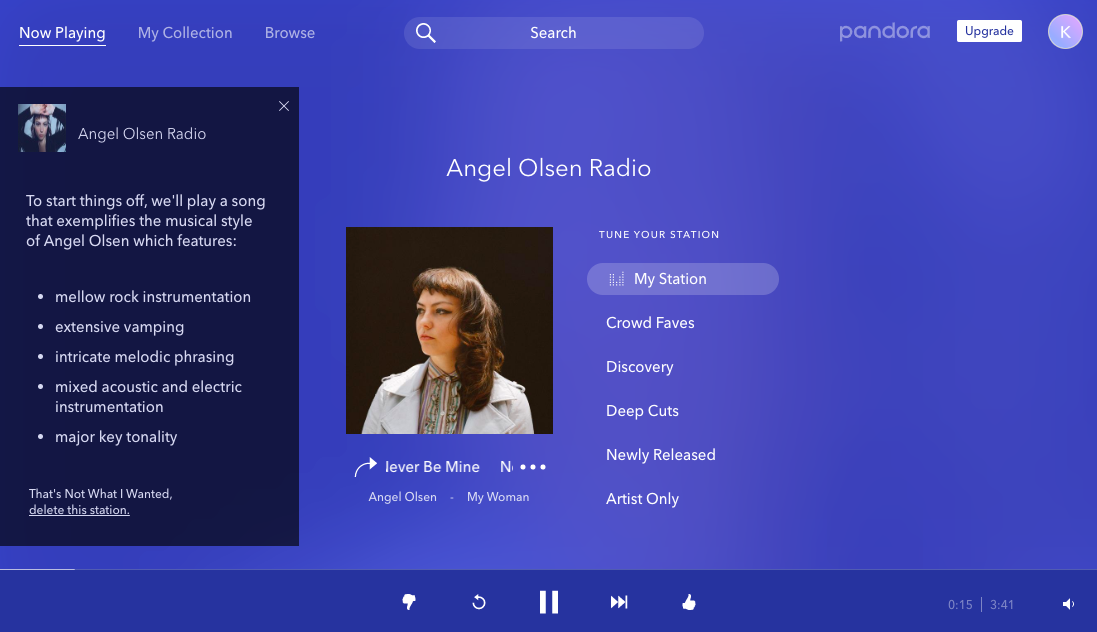
And of course, Youtube uses a binary rating system in their Youtube Music app, too:

Products with sophisticated, automated personalization and curation algorithms tend to favor binary rating systems.
The more rating options you give users, the more mental effort you require from your users. A binary system not only reduces the cognitive load for users, it also allows you to collect larger datasets, which means your product’s personalization will get more intelligent in time.
Stars and thumbs are 2 of the most popular rating systems, but they’re not the only options. Some review sites use a 10-point rating scale (IMBd) or 100-point rating scale (Rotten Tomatoes), for instance. And Facebook's algorithm now accommodates multiple emojis.
And then of course, there are hearts or favorites. Hearts are frequently used by social media platforms—Twitter, Instagram—and ecommerce apps alike—Etsy, Rent the Runway—to deliver more personalized experiences. How that personalization works varies from product to product.
On Instagram, each user’s feed is personalized based on a complex (and seemingly ever-evolving) algorithm that takes favorites into account alongside a range of other factors.
On Etsy, that personalization is a little more straightforward: Users can save items or sellers to their favorites, both to create a self-curated collection of most-loved items for future purchase and to influence the suggestions they see from Etsy.
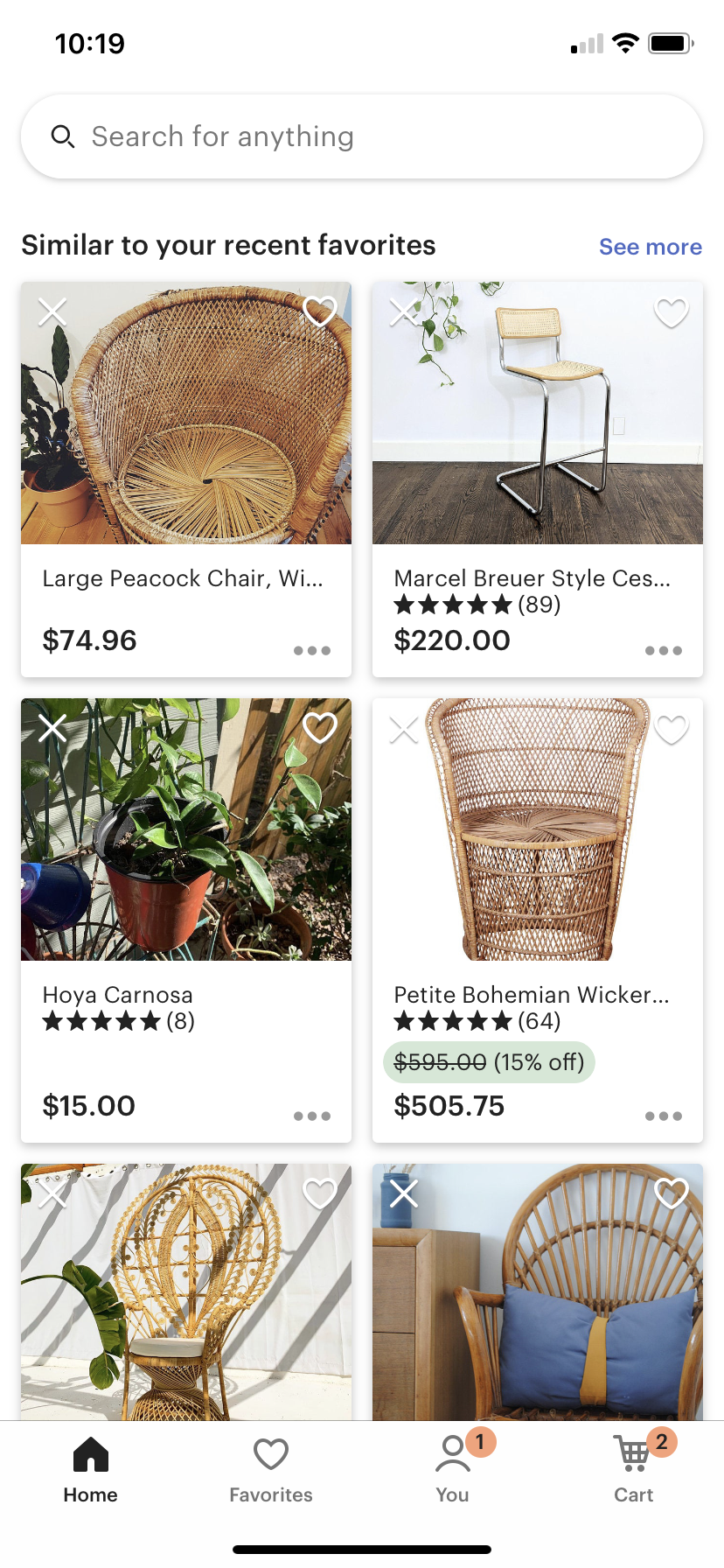
Whether they’re made of stars, thumbs, or hearts, all rating systems are ultimately about user engagement. The right rating system shape and scale for your app is whichever form your users engage with most.
More user engagement (which is a great outcome in and of itself) means more data that can be used to provide ever more personalized UX. The result is a stickier, smarter product experience that only gets better with time.